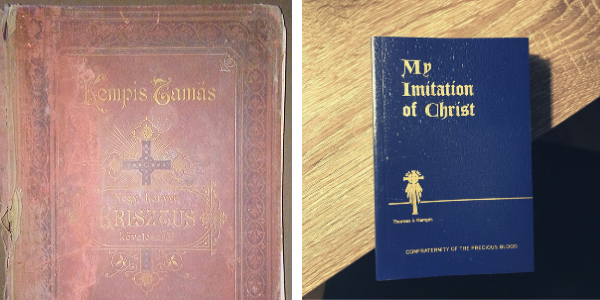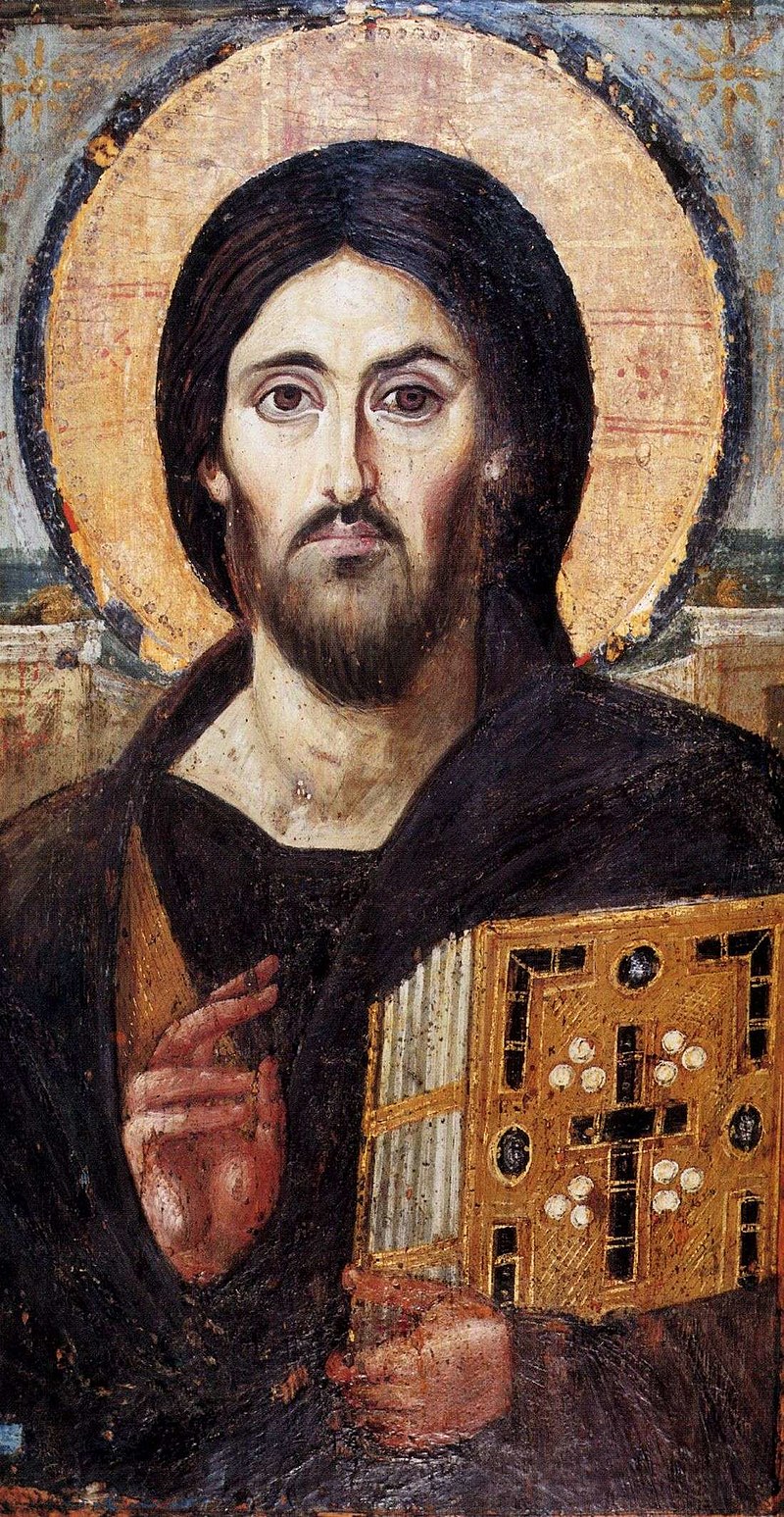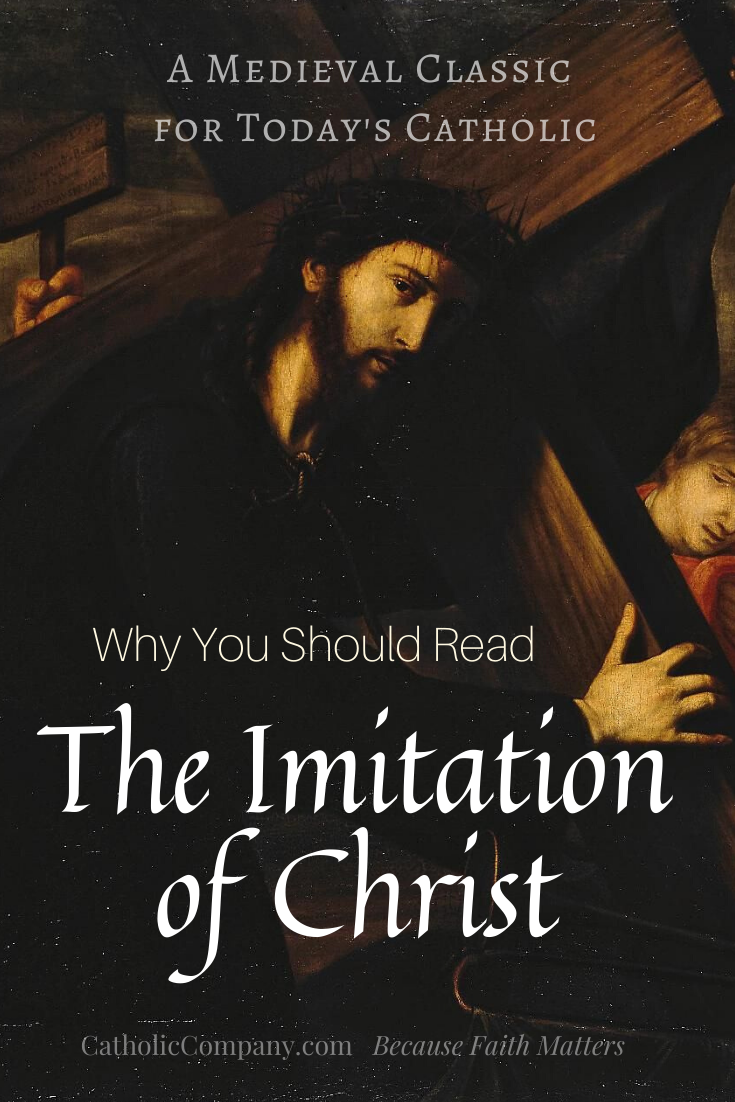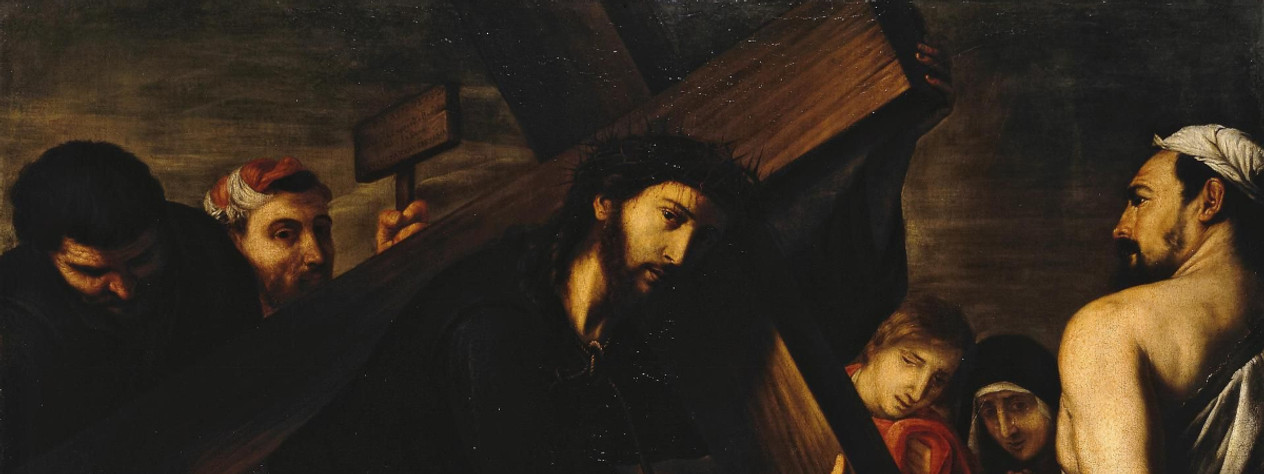The Imitation of Christ: A Medieval Classic for Today’s Catholic
Nov 22, 2019 by Cheryl Hadley
For over 500 years, a single book has been the most widely read devotional work, second only to the Bible. It has been translated into at least fifty-five languages and published in over 6,000 editions—approximately one edition per month for the last 500 years. This book has profoundly influenced such beloved saints as Thérèse of Lisieux, Ignatius of Loyola, Alphonsus Liguori, and Thomas More, just to name a few.
The History of a Modern Classic
This spiritual call-to-arms was written by hand, anonymously, around the year 1418, before the invention of the printing press—and speculatively attributed to numerous authors. Not until 1441, when Thomas à Kempis signed his name to a handwritten codex of The Imitation of Christ, was it properly attributed to him. It was so well received that in its first fifty years, monks in 15th-century Europe hand-copied and circulated at least 758 handwritten manuscripts in numerous languages throughout the world. These are only the handwritten copies in existence today, but it is likely that there were others which have been lost to time.

It is believed that Kempis wrote the book in four sections, or four smaller books, to instruct the brothers in the monastery where he served as sub-prior and eventually as superior and procurator in the Brethren of the Common Life, a German-Dutch community in the Netherlands. Kempis was a well-known copyist and writer who gave the Church thirty-one books, manuscripts, articles, hymns, homilies, and of course, The Imitation of Christ. It is widely appreciated by Catholics and Protestants as a classic manual of devotion.
[[22318]]
“Come Now, and Begin This Very Moment”
Come now, and begin this very moment, and say to yourself, "Now is the time to do it...Now is the right time to amend my life."
—The Imitation of Christ, Book I, Ch. 22
Some readers are intimidated by its apparent intensity. But Kempis knew the weakness of men and the resolve and perseverance necessary to reorder our lives for Christ. Though he wrote it for his brothers, who lived in community and withdrawn from the world, much of The Imitation of Christ is also applicable to us—to the degree that we can implement it based on our own vocation in life. It should be read with that in mind. Devotees of the book describe it as both beautiful, and, in some places, severe—reflecting the radical requirements of a life fully dedicated to Christ, both then and now.
Kempis copied the Bible by hand four times in his lifetime, before there were printing presses. This lifelong immersion in Holy Scripture brought a depth and wisdom from which The Imitation of Christ was born. He drew his insights from Scripture, the Church Fathers, and medieval mysticism. He believed the ultimate purpose of the Christian life was to imitate Christ by cultivating an interior and exterior life of holiness and virtue while conforming the will to God’s and renouncing the temptations of the world.
Kempis divided the book into four parts, or “Books.” Each book is then divided into chapters. These chapters, containing a great deal of wisdom, instruct the reader on how to imitate Christ in a particular behavior or manner. Many people find that it is easier to read this book in small sections. A chapter, or even a part of a chapter, can be used for daily meditation.
[[18589]]
Book I: “Helpful Counsels of the Spiritual Life”
The first book in The Imitation of Christ exhorts the reader to renounce all that is vain and worldly. Kempis urges his brothers to resist the temptations of the world, to cultivate humility, and to denounce pride. He stresses silence, solitude, and prayer as important to these goals. He recognizes the world’s contradictions and how they distract the heart. "How undisturbed a conscience we would have if we never went searching after ephemeral joys nor concerned ourselves with affairs of the world," Kempis writes. He also tells us that we must remain faithful and fervent, having great hope of attaining victory and salvation while avoiding presumption.
Book II: “Directives for the Interior Life”
Book II further instructs the reader in attaining peace and purity of mind and heart, in submitting to the will of God, and in carrying the crosses of this life for love of Jesus. Kempis tells the reader to be grateful for "every little gift" so as to be more worthy to receive even greater ones. In the last chapter, “The Royal Road of the Cross,” he explains that if we carry our crosses willingly, we will reach our desired goal, which is conformity to God's will. If we carry our crosses grudgingly, our burdens become so heavy that even after throwing off one cross, we will only find further crosses that we will struggle to endure. Book II reminds us that carrying our cross for love of God is a true imitation of Christ.
Book III: “On Interior Consolation”
The longest of the four books takes a different tone, and is presented as an exchange between Jesus and a faithful follower. Jesus says that spiritual progress and perfection consist in offering oneself to the divine will and not seeking oneself in "anything either small or great, in time or in eternity.” He tells His child that all is not lost even when something does not go as planned or expected, for there is a higher purpose in all things. Christ tells the reader, “The man who trusts in Me I never send away empty. When I make a promise I keep it, and I fulfill whatever I have pledged—if only you remain faithful...unto the end" (Book III, Chapter 3).
Book IV: “On the Blessed Sacrament”
Book IV is also in the format of a dialog. It teaches us about the great graces imparted by the Blessed Sacrament. Our Eucharistic Lord explains to the disciple how the Blessed Sacrament replenishes the soul, fortifies the mind, and gives strength, stamina, and perseverance to the body. He tells His disciple of the great value in offering one’s self to God at the time the Body of Christ is offered in the Mass—and the importance of making the same offering of self when receiving Holy Communion. Jesus asks for submission to the will of God in all things. He explains that only when we conform our will wholeheartedly to God—no longer seeking our own will or pleasure, but placing complete trust in Him—can we be in union with God and at peace.

Common Themes for Reflection As You Read
- Thomas a Kempis reminds us that we often live and act without proper knowledge, planning, reflection and prayer in our lives—and he explains that this impulsivity and thoughtlessness is the cause of great unhappiness throughout our lives.
- By seeking to know God more intimately, we can come to know the Truth, which then leads us to pursue it deliberately. Through knowledge of the truth, we also come to know ourselves, and it is this knowledge that helps us conquer and master those parts of ourselves which hinder spiritual advancement.
- As we grow in our desire and ability to closely imitate Christ, we aspire to surrender to the will of God in all things. Once we conform our wills to His, consistently renouncing the things that impede us, detaching from them, and “putting on Christ,” we grow in holiness and grace. This, in turn, leads to greater spiritual progress. Over time, we can unite ourselves and our wills to God and be transformed by His grace and love.
The Imitation of Christ is more than just a manual of devotion—it is a thoroughly Catholic treatise on the ideals of the Christian life. It offers instruction on how to imitate Christ both interiorly and exteriorly. It is a “How To” book that provides guidance on living with ourselves and others, and its wisdom helps us keep our gaze fixed on Christ as the perfect model of holiness. It is a radical call to amend our lives. It is rich in scriptural interpretation, and beautifully intimate in its dialog between Jesus and the reader, whom He refers to as His child.
If we truly wish to be transformed into His image, we must study that image deliberately, and strive to imitate it. This wonderful spiritual classic is important reading for every follower of Christ. It has been a source of reflection and prayer for millions of Christians over the last 500 years, and even in our own time, this soul-searching work still resonates. It moves hearts and minds across time, cultures, and distant lands. The Imitation of Christ belongs on the reading list of every Catholic who aspires to love Christ by imitating His example.
Follow Me. I am the Way, the Truth, and the Life. Without the Way, there is no going. Without the Truth, there is no knowing. Without the Life, there is no living. I am the Way which you must follow, the Truth which you must believe, the Life for which you must hope.”
—The Imitation of Christ, Book III, Ch. 56
Do you want your own copy of The Imitation of Christ? Click here. This edition is beloved to Catholics today and has received 5-star reviews from readers.







